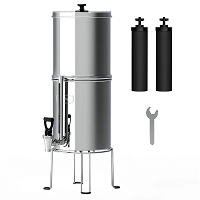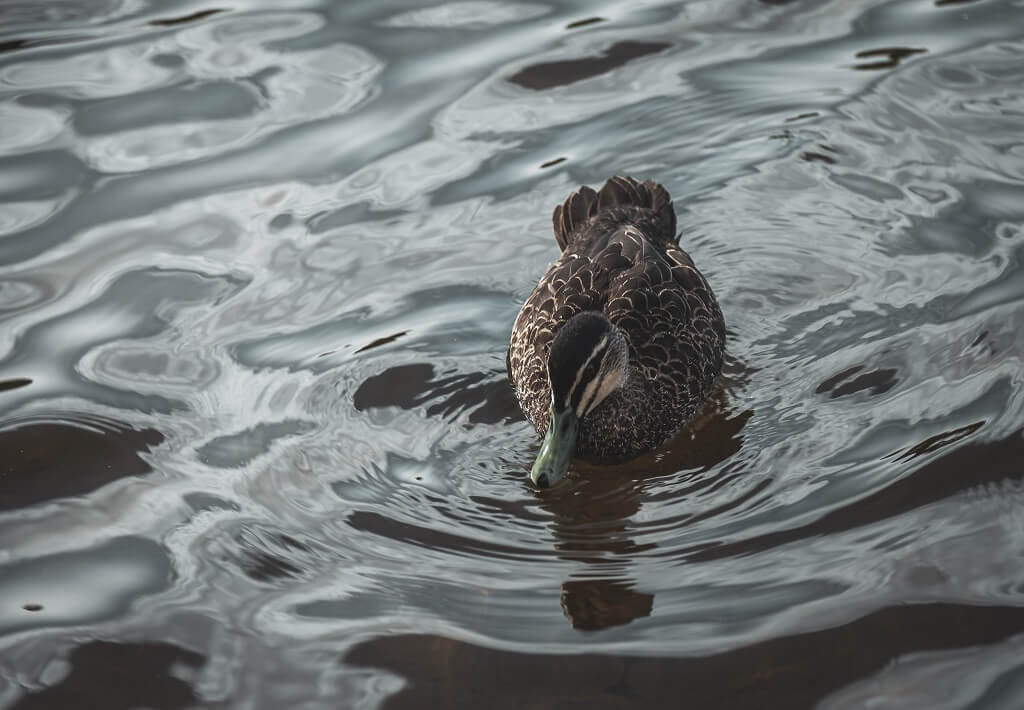Did you know that an estimated 775,000 people die on an annual basis due to dirty drinking water? Think about it, that’s nearly 1 ½ people every single minute. This isn’t a detail considered much throughout the United States, as the majority of our water sources are clean enough to drink. In fact, tap water is quite the luxury when you consider most people around the world cannot enjoy the same utility as a more developed country.
However, regardless of where you live, it never hurts to have a trustworthy water filter system for when the worst takes place. When your drinking source is out of your control, having a way to obtain clean drinking water is one of the first rules of preparation. Let’s take a look at the best emergency water filter options currently available, and consider which style best suits your situation.
Risk of Contaminants in Untreated Water Sources
Contaminants are no stranger to untreated water sources. It’s for this reason that water treatment facilities exist, in order to provide the safest tap water throughout the US. However, once the water reaches your property, the responsibility stops there. If you don’t currently know the current condition of your pipes and home, you could be putting your family at risk of any number of contaminants, including viruses and bacteria, heavy metals, and even sediment.
Illnesses & Infection
When consumed through food or water, bacteria and viruses can lead to life-threatening infections and illnesses. Individuals may be infected with cholera, typhoid fever, Legionnaire’s disease, hepatitis, E. Coli, polio, and more, simply by drinking water from an untreated source. Although most of these issues cause mere system upset, others may be serious enough to call for a visit to the hospital.
Affected Organs
Viruses and bacteria aren’t the only dangerous aspects of drinking untreated water. Heavy metals flow through natural water, especially lead, aluminum, and more. Through filtration, heavy metals are decreased to an amount generally regarded as safe. However, in an emergency situation, the natural amount present in lakes, streams, or rivers, could pose a danger to your overall health. Organs and the immune system aren’t typically considered, but they are affected by heavy metals, especially the liver, kidneys, and skin. Over time of high levels of exposure, your liver may fail to properly detox your body, and lead to worsening conditions.
Emergency Preparedness Water Treatment Methods
Have you considered preparing your household for emergency situations? On average, any adult needs more than 32 ounces of water per day to maintain proper urine output levels. Taking this figure into consideration, are you prepared to provide enough safe drinking water if the power is shut off? There are a few ways you can ensure the availability of healthy drinking water for your entire family.
Water Filtration System
Available in a variety of models, styles, and methods, a water filtration system is a widely available, common form of water treatment. Whatever your needs, you can bet there is a water filtration system to suit them. From electric units, to gravity fed, water filtration systems may be used within the home, in a camper or RV, or in an off-grid location such as a yurt.
If you are looking to purchase one for your home, a water test will help you decide exactly what type of water filter to purchase. The type of water filter cartridge you utilize is highly dependent upon the contaminants present in your tap water. This is where a simple mail-in water test serves an invaluable purpose. Alternatively, you might contact your local water facility to request their annual water report.
UV Sterilization
While a UV sterilization unit is one of the most effective methods of water purification, it has it’s own pros and cons. With your average water filter, there is an inherent risk of the odd contaminant slipping through – which is impossible with UV sterilization. This type of system uses a UV light to kill microorganisms on a consistent basis, and is a great option in tandem with water filtration, as well as a stand-alone unit. One downside, however, is the UV’s inability to neutralize chlorine and heavy metals.
Boiling Water
It’s important to note, the act of boiling water should only be used in a true emergency. This method does neutralize harmful pathogens, including bacteria and viruses, but it cannot remove other forms of contaminants. The heat works to damage the impurity’s overall structure, but cannot remove heavy metal, and more. Boiling is also not to be compared to distillation, which we discuss in another article.
Best 3 Survival Water Filters
Now that we have discussed the methods and styles of emergency water purification, let’s explore a brief overview of the top 3 water filters for a survival situation. These were chosen according to overall effectiveness, affordability, and usability.
Waterdrop Filter Straw For Camping
Waterdrop’s Filter Straw serves as a compact water filtration option, in order to fit into a day bag, on campers, and even in a restaurant. Utilizing a 0.1-micron hollow fiber membrane, this straw filter is capable of removing harmful substances from untreated water sources. High-grade coconut shell activated carbon fiber improves overall taste and odor, in order to provide safe drinking water. Wherever life takes you, the Waterdrop Filter Straw enables you to drink adequate amounts of water, sourced from streams, lakes, rivers, glaciers, and ponds.
Epic Nalgene OG
Comprised of 100% BPA-free tritan material, the Epic Nalgene OG Woodsman features a 1-liter water bottle design, housing its own filter. Nalgene’s bottle is the perfect choice for everyday use, as well as survival scenarios. This water bottle filter eliminates up to 99% of all contaminants commonly found in untreated water sources of the great outdoors. Additionally, the integrated filter is rated to last up to 300 liters, for up to 300 refills before replacement. The Epic Nalgene OG poises outdoorsmen to eliminate bacteria and viruses while they explore, and stay hydrated at the same time.
Waterdrop King Tank Gravity-Fed Water Filter
Waterdrop’s King Tank Gravity-Fed water filter is our most favored choice for survival situations. Not only does it not require electricity for operation, but it offers optimal effectiveness for the removal of contaminants, solids, heavy metals, pharmaceuticals, and more. This water filtration system is the ideal choice for water purification, regardless of whether you need something for day-to-day use, or stored for emergency use. Ultimately, you won’t be disappointed in the King Tank Gravity-Fed Water Filter from Waterdrop.


















